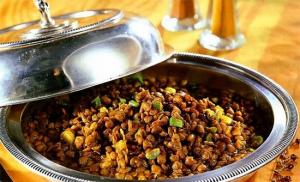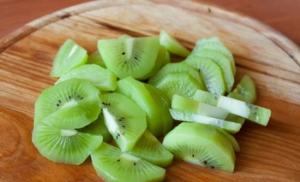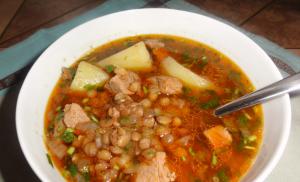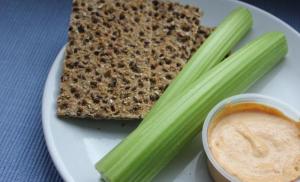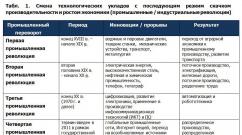How to crochet roses patterns for beginners. Crochet Chinese roses - large and small





Here's a bouquet

We knit the petals of our rose. They are knitted in the round: 6 sc, 12, 18, 24, 30, 36 sc, etc. We knit to the desired petal diameter. I usually knit 42 sc. for the largest petals.
After reaching the required diameter of the circle, we knit the corners. To do this, we make increments one above the other in 3=5 rows in one half of the petal.
then we knit a “heel” on 5-6 stitches in 3-4 rows. The heel is needed to assemble the flower.

We knit the required number of petals. At the same time we make petals different sizes(diameter) - three different “standard sizes”. I usually collect a flower with 12 petals.

We start collecting the flower from the smallest diameter to the largest. When assembling the flower, we try to hold the petals by the “heel” and fasten them with a simple thread, wrapping it around the “heel” (you can not just wrap it around, but stitch it with a thread and a needle).

We knit a sepal. To do this, we knit 2 chain loops, cast on 6 sc in the second loop from the hook, then increase each sc for a total of 12 sc. Then we knit in a spiral to the required depth (so that the tail of all the petals is hidden). If the diameter is not suitable, you can make increases to the required diameter. The leaves on sepals5 are knitted as follows: cast on 8 chain stitches. Rotate the product. We knit 1 half single crochet, single crochet, half double crochet, double crochet and then reverse order. If you want to make longer leaves, we increase the number of chain stitches accordingly and you can knit a half-double crochet, a double crochet, etc.

We take the wire. We make a small loop at the end. We collect the flower: we string the petals and sepals onto a wire. Sew the sepals to the petals.

Brew gelatin (1 tablespoon per glass of boiling water). We immerse the flower in the solution, squeeze it out and hang it by the wire to dry.
As it dries, add the required form petals (from outermost to middle). Flowers dry in different ways - on average 2-3 days.

After drying, we finalize the flower. We wrap tape around the stem, attaching the leaves. She didn’t explain how to knit leaves. If anyone doesn’t understand, write.

Legend:
sc
- single crochet;
VP –
air loop
etc -
increase;
sss
– connecting post
dc
– double crochet
ss2n
– double crochet stitch
pssn
– half double crochet
Knit in a spiral, mark with a marker
beginning of row
Petals
1. 6 sc in amigurumi ring.
2. pr x 6 = 12
3. (sc: inc) x 6 = 18
4.
(2 sc, inc) x 6 = 24
5.
(3 sc, inc) x 6 = 30
6. (4 sc; inc) x 6 = 36
7. (ex, 4 sc) x 3, ex, 20 sc = 40
8. (ex. 5 sbn) x 3, inc. 21 sbn = 44
9. (inc, 6 sc) x 3, inc, 22 sc = 48
10. (inc, 3 sc)x6, inc, 23 sc = 55
11. (ex, 4 sc) x
6, inc, 24 sc = 62
1p: ch 1, 9 sc, 1
ch, 5 dc,
2 r.: 2 ch rise, 4 dc;
3 r.: 2 ch rise, 4 dc
4 r. 2 ch rise, 4 dc,
We knit three petals. We knit subsequent petals with decreasing
for 1 row, three identical ones.
When knitting an addition petal starting from the 7th
we make rows on top of each other so that
we get clearly defined corners, which we subsequently pull out (after
dipping into a gelatin solution) to shape the petal.
Leaflets
Leaves can be knitted in two ways:
1st method:
Knit a chain of 12 ch.
1 row: 1 sc in the second loop from the hook, 9 sc, 3 sc in the last loop of the chain,
continue to knit 8 sc on the other side.
2 rows: turn the work, ch 1, 7 sc, 3 sc in one loop,
sbn, , what is in square brackets
knitted on the other side.
3 rows: turn the work, ch 1, 7 sc, 3 sc in one loop,
sc, .
4 rubles:
turn the work, ch 1, 8 sc, 3 sc in one loop, sc,
5 rows: turn the work, ch 1, 8 sc, 3 sc in one loop, 3
sc,
6 rows: turn the work, ch 1, 9 sc, 3 sc in one loop,
sbn, sss.
The leaf is finished.
If desired, continue until the leaf reaches what you want
size.
Lily petals are knitted using the same principle.
When knitting the first row, weave a thin wire
leave the “tail” of the wire at the base
leaf for assembling a twig.
I use green wire 2 colors.
2nd method:
Knit a chain of 14 ch.
1 row: starting from the third ch, knit: 1 sc, 2 hdc, 6 dc,
1 hdc, 2 sc
2 rows: turn the work, 1 ch, 1 sc, 2 dc in one loop, 2
dc2n in one loop, 1 dc2n, 2 dc2n in one loop, 2 dc in one loop, 2 dc
in one loop, 1 sc, 2 dc, 1 sc in the penultimate loop of the chain
3 r. in a circle: 2 dc, 1sc, 2 dc in one loop 2 dc, 2 dc2n
in one loop, 1 dc2n, 2 dc2n in one loop, 2 dc in one loop, 1 sc, dc.
4 rub. turn the work: 1 ch, 1 sc, 2 hdc in one loop, 2
dc in one loop, 2 dc in one loop, 2 dc, 2 dc in one loop, 1 hdc, 2 hdc
in one loop, 6 sc, 1 ch, 1 hdc.
5 rub. in a circle: 1 ch, 6 sc, 2 hdc in one loop, 1 hdc, 2
dc in one loop, 2 dc, 2 dc in one loop, 2 dc in one loop, 2 hdc in one
loop, 1 sc, 2 dc.
Tie the sheet with a “crawfish step”; when tying, thread it along the edge
thin wire. Collect three leaves from the leaves.
There are many things in the world that you can knit with your own hands. It just requires a little experience and patience. The work turns out to be interesting. You can knit not only clothes, but also accessories. One of the most popular additions to clothing is a rose. It is very easy to knit by yourself. If you decide to try your hand at such work, then the main thing is to prepare the material. A crochet rose decorates any look, and the knitting pattern will help you in your work.
This rose can be used not only as an addition to clothing. By attaching an elastic band, you get a hair decoration, it looks chic on a hat, and if you attach it to a sweater, it will turn out elegant.
Making a bright crocheted rose with patterns
Before you start working, you need to remember: the outcome depends on the chosen yarn, hook, knitting density and the length of the air chain.
Each craftswoman has her own knitting density and can end up with completely different flowers. The article will describe how to crochet a beautiful and lush rose.
The very first step is knitting a chain of air loops. The length for a voluminous flower is about twenty centimeters.
Second row knitting: two columns, one yarn over in one loop, which is divided by three air loops. Double columns need to be knitted through one loop along an air chain.


Third row: two columns and one yarn over, three chain stitches, two columns and one yarn over in each loop of the previous row.


Beginning of row: seven columns with one crochet in each loop of the previous chain row for six loops. Then knit seven columns with two yarn overs in each chain stitch of the previous row, until the very end of the row.


Cut the end of the thread and fasten it. We collect the flower from the side where the petals were with one crochet. Spiral wrap it and sew it.

Continue sewing this way until the very end, and if necessary, sew on the hair elastic as well. A beautiful flower pleases the eye.

Create a beautiful rose for a vase
You can make an interesting decoration for your room or give it as a gift. to a loved one. Crocheting any flower, and especially roses, is an activity for persistent craftswomen who replenish their basket with new works.
You need to prepare yarn of any color. The size of the flower depends on the number of air loops. In our work we need sixty of them.

For further work, a diagram is attached:

After knitting all the steps, it turned out to be a spiral.

You can take matching threads or even a contrasting color and tie the edges. This will give the rose a more complete look.

Sew a spiral using threads step by step. The result is a flower bud.

You also need to tie a cup to the rose. The diagram will help with this:

You can add variety to the cup: make one petal small and the other larger.

Now tie the leaves. You can make both large and small (without knitting the last row).


A rose needs a stem. A straight stick will do. If you do not cut off the knots, you can attach leaves to them. Wrap the stick with green thread.

Having made the stem, we move on to attaching the cup. You need to put it a little on the stem itself so that the cup holds better, and sew it on. We also sew on the leaves.

We attach the bud to the cup and the gift is complete. You can make a bouquet of such roses and please someone. The flowers turn out very natural and natural.

Volumetric rose for beginners with description
You can create a rosette that is very elegant and sophisticated. Before starting work, you need to study the diagrams:

Using the first pattern, make three petals. We make the very first circle of loops tightly so that the hole is almost closed. Hide the starting thread, and make the one that remains long at the end. The rose will be attached to it.

Knit three petals according to the second pattern:

Knit four more petals according to pattern number four.

And according to the fifth scheme, you need to knit five petals.

The third scheme is created for the bud, to which all the petals will be attached. The beginning of the air loops (the ring itself) should be loose, so that you can then insert the stem. Fill the bud with padding polyester.

It's time to sew on the petals. Where there is a hole in the bud, it should be at the bottom. You need to sew in layers, based on the volume of the petals. You need to sew them in halves: half of the first petal, half of the second. Sew the remaining half of the first petal onto the second. Thus, sew on all three petals. It should look similar to the picture:
The scope of application of knitted roses is truly extensive: attach a hair elastic to it and you have a stylish decoration. She can turn an inconspicuous hat into an elegant one, and an unremarkable sweater into an elegant robe. Crocheting roses is quick and interesting. Shall we get started?
To make a knitted rose, take:
any yarn (leftovers will do);
a hook that fits it in size;
sewing threads to match the yarn;
sewing needle;
base for the rose if you plan to turn it into a brooch or hair decoration.
Crochet rose: job description
Let me make a reservation right away that the final result depends largely on such seemingly small factors as the density of knitting, the correspondence of the hook to the selected yarn and the initial length of the air chain - the basis for the future knitted rose. I knit quite tightly and the rose looks tight. My mother knitted it using the same pattern - it turned out to be a completely different flower, perhaps more vibrant and natural.
So, step No. 1 is to knit a chain of air loops. The length is arbitrary, for a lush flower - from 20-25 cm.

The second row is knitted like this - 2 tbsp. with 1 yarn over in one loop, separated by 3 ch. Such double stitches are knitted through one loop along a chain of air loops. “Pairs” of columns are not separated (see diagram below).


Next row - 2 tbsp. with 1 double crochet, 3 ch, 2 tbsp. with 1 yarn over in each stitch from the chain loops of the previous row.


The beginning of the row is 7 tbsp. with 1 yarn over in each stitch from the chain stitches of the previous row, for 5-6 stitches, and then - 7 tbsp. with 2 yarn overs in each loop from the chain loops of the previous row - to the end of the row.


Fasten the end of the yarn and trim it. We thread the needle with a thread matching the color of the yarn.
We begin to collect the rose from the edge where the petals are made from columns with one, not two, crochets. We wrap the edge into a spiral and begin to sew.

We sew to the end, if necessary, immediately hem the hair elastic.


Hello!
Today I have prepared for you a master class on how to crochet a rose.
For the rose, I chose pink and purple yarn Adelia “Valeri” (50% wool, 50% acrylic, 50g/146m) - I once knitted from it. We will also need green cotton threads for the leaves and stem, hooks No. 1.5 and 2.5, wire (thin and thicker), tape and scissors.

First we knit the petals of our rose according to pattern 1:
Using hook No. 2.5 we cast on 4 VPs, close them in a ring and knit 3 VP rises and 12 double crochets. At the end of the row, connect the column and again 3 VP lifts...


We take dark-colored yarn and knit 4 arches of 4 ch, attaching them with single crochets to every second stitch of the previous row.


We knit 7-8 such petals. I did not tie one of them with purple yarn (this will be the middle of the rose).

Using crochet hook No. 1.5, I cast on 8 VP (in the diagram - 10), closed it in a ring and knitted, starting each row with 3 VP rise:
1st row - 3 VP lifts and 9 double crochets (dc s/n),

2nd row - repeat * 2 treble s/n, 1 treble s/n *
3rd row - repeat * 2 treble s/n, 1 treble s/n, 2 treble s/n *
4th row - repeat * 2 treble s/n, 3 treble s/n, 2 treble s/n *.
The result is a “cup” like this:

1st row - 3 VP and 6 treble s/n, turn the work,
2nd row - 3 VP, 4 treble s/n, 2 treble s/n with a common top, turn the work,
3rd row - 3 VP, 4 treble s/n, turn the work,
4th row - 3 VP, 2 treble s/n, 2 treble s/n with a common top, turn the work,
5th row - 3 VP, 2 treble s/n, turn the work,
6th row - 3 VP and 2 treble s/n with a common top.

The diagram suggests knitting each leaf separately, cutting the thread each time. Because I don’t like to bother too much with tying knots and tucking in tails; I suggest knitting without tearing off the thread. To do this, having finished knitting a leaf, we “go down” in half-columns along its left edge, reach the cup and begin knitting the next leaf.

This way we get a star - a sepal of a knitted rose.

Now we knit the leaves according to pattern 3:
We start with 10 VP. Leave a tail of thread about 10 cm long.
Then 1 row - 1 VP rise, 2 treble crochets, 2 half crochet stitches. s/n, 2 treble s/n, 2 half treble s/n, 2 treble s/n, 3 VP and repeat the same on the other side of the piece of paper.

Tie a half stitch at the top of the leaf. s/n, double crochet, double crochet in the arch from 3 VPs of the previous row, 3 VPs, 1 more double crochet stitch in the same arch and then the other side of the leaf symmetrically to the first.

Now we pull the tail of the thread, which we left at the beginning, onto the front side at the top of the leaf,

and knit the following chain along the middle line:

Sew the sepals to the knitted rose:

Prepare a wire hook, tie a green thread to it and insert it into the middle of the rose.
Then we wrap the stem, as shown in the photo:

It turns out like this:

I first wrapped the junction of the branches with the stem with tape, and then wound the threads. I also carefully secured the ponytails at the bottom with tape.
Now you know how to crochet a rose.
How to crochet picot. Master Class.
How to crochet a flower

